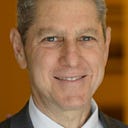Life is for the best and the worst
by Vic Shayne
author
Consciousness: The potentiality of all existence
Joseph Campbell once said of life, “Say Yes to it all.” You can take decades to meditate on this onion-like sentence, as I have. Just say Yes to life.
Life is the entire movement of consciousness, which is the totality of all that is. In this ball of movement is action, thought, memories, inclinations, phenomena, destruction, creation, beauty, hate, misery, ecstasy, pleasure, pain, and all else. It’s one single movement, and therefore nothing exists in isolation, including the one you take yourself to be. This is a tough pill to swallow for the egoic sense of self.
What did Freud know?
Freud said that human beings have an Id, an ego, and a superego. The Id is the reckless spoiled child of the persona who wants satisfaction now, in defiance of the consequences. The superego wants to present a person to the world as a good, noble, worthy individual. The ego is the false self, the mask to the world. In actually, there are no such divisions of one’s being, and each person is a composite of all of the contents of consciousness. However, it’s true that people try to present themselves as deserving and righteous. I am right, you are wrong. That guy is bad, but she is good. He is mean, but I am nice. These sorts of proclamations create a perpetual conflict when we don’t admit to the entirety of the contents of consciousness within us.
We are all things, but admit to only some of them
No person is good or bad, but both at the same time. This is because thoughts arise spontaneously out of consciousness — the consciousness out of which we are all expressions. We don’t produce these thoughts, but they are all available to us. And these thoughts are indiscriminate. We are like radios receiving all the signals. We don’t create the signals, but merely receive them out of the ethers. Depending on our proclivities and inclinations, we hold onto some of these thoughts and not others, but we can’t control the fact that they are ALL within us as expressions of one single consciousness. However, the egoic self likes to take credit for the good signals (thoughts) and deny that it has anything to do with the bad ones. It’s very black and white this way.
What is the egoic self?
The egoic self is a belief system that is created when you hold onto certain thoughts — that you are a body and a mind, and that you are defined by your possessions, friends, relatives, religion, body type, race, gender, accomplishments, failures, and so on. These beliefs are instilled by authority figures, teachers, parents, relatives, religious leaders, the media, and so on. All of the beliefs about the self — who you are — are subject to change; and they all die along with the body at the point of physical death. Sometimes they die before death in an event that we call a change of heart, a new philosophy, an awakening, an attitude adjustment, and so on. The egoic self, therefore, is the false self merely because upon very close inspection it has no solidity, like a mirage.
The real Self is consciousness, which is the totality of all that is. We are all things within consciousness, undivided, unbounded, indescribable, untraceable, interdependent, complex, and dynamic. This is Life!
Life presents all means of events and phenomena. We like to give these labels of good, bad, and neutral, but this is the egoic self speaking. Consciousness makes no such distinctions.
The good is born from the bad
The great movement of consciousness — life— creates terrible events, terrible people, and terrible destruction. But from these terrible things emerge opportunities for the best outcomes, the most courageous and heroic people, and new creation. Rebirth only comes from death. The egoic self says No! but consciousness says Yes! to it all.
Out of the inhumanity of war are opportunities for the greatest acts of humanity. History is replete with examples if you only care to look into it. The Holocaust produced Hitler, Eichmann, and Mengele, but it also produced Ann Frank, Raul Wallenberg, and Viktor Frankl.
The horrors of World War II produced Theodore Roosevelt, Jr., the oldest man and only general in the first wave to storm the beaches of Normandy. Despite his arthritis, heart condition and injuries received in World War I, he charged the beaches with a cane and a pistol and became a hero.
The Civil War made a national treasure out of a backwater lawyer named Abraham Lincoln; and the Revolutionary War made a hero out of George Washington. The war to gain civil and human rights produced Martin Luther King and Gandhi. The horrific institution of slavery produced the courageous and compassionate Harriet Tubman.
The oppressive British Empire in India gave rise to a college girl named Usha Mehta who risked her life to set up an underground radio station. Along with her associates, she broadcasted messages from Gandhi and other prominent leaders across the country.
The worst gives birth to the best
The list of heroes goes on and on and on. Why? Because the worst part of life gives birth to the best part of life. It is an endless cycle. The individual sense of self suffers miserably from the effects of other individual selves in one collective called consciousness. The question is whether we want to complain, hide, lash out, join the fight, resist, acquiesce, switch sides, or surrender. Are we going to decry how unfair life is, or will we realize the facts of life and say Yes to it all?
